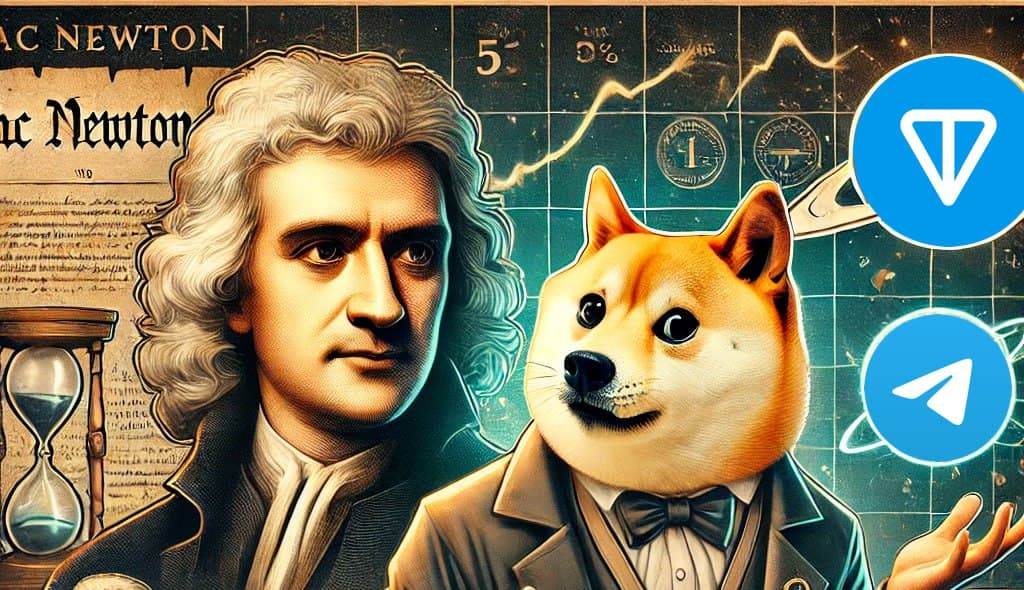While TON Foundation is a more familiar name, few know the story of its early contributors—the NEWTON team (TON Core Team).
Through voluntary technical contributions, NEWTON earned recognition from
@Telegram’s official team in 2021, leading to the technical handover that marked the greatest “Community Takeover” in blockchain history.
As an early member of NEWTON, let me share this story. ![]()
— @drawesomedoge
Introduction: Joining the NEWTON Team and Its Mission
When I joined the NEWTON team, our primary mission was clear: maintain the stability of the TON testnet2 code while enhancing developer tools.
Since we didn’t have direct control over the ton-blockchain GitHub repository, we created a new organization called NEWTON.
To ensure smooth network updates, we encouraged the community to use NEWTON-developed validators as the standard version.
Between our founding and June 2021, the NEWTON Team accomplished several groundbreaking developments and infrastructure projects. Let’s dive into 10 critical contributions that shaped TON’s early days.
1. mytonctrl: Automated Node Management Tool
Our first major contribution was mytonctrl, a powerful automation tool for node installation and validator setup.
Features included:
- Wallet creation
- Contract deployment
- Transaction history retrieval
- DNS registration system (distinct from the modern NFT-packaged DNS)
Additionally, mytonctrl could configure validators, liteservers, and liteclients, simplifying node data access and parsing.
By 2021, we added CPU-based mining scripts and automated power tests to facilitate $TON mining.
2. tonmon: Visualizing Blockchain Health
We created tonmon to monitor blockchain health.
Key metrics included:
- Block creation times
- Shard statuses
- dPoS election schedules
- Validator counts and weights
In the early days, the network had only ~80 validators globally.
3. tonmine: Monitoring Giver Contracts
tonmine tracked TON mining activity.
By 2021, only ten small givers remained, distributing ~200,000 $TON daily across all contracts.
Mining difficulty varied significantly depending on the giver.
4. Cross-Chain Bridge
Before jetton or NFT standards, we developed a native $TON bridge for ERC-20 tokens on EVM-compatible chains.
This enabled seamless transfers between TON, Ethereum, and BSC via bridge.ton.org.
5. @cryptobot: Telegram Bot Wallet
In 2021, we developed @cryptobot, a Telegram wallet supporting:
6. toncenter: Simplifying Blockchain Data Access
toncenter provided public APIs for developers, removing the need to set up full nodes or worry about serialized data formats.
toncenter paved the way for modern APIs like tonxapi.com.
7. explorer.toncoin.org: TON’s First Blockchain Explorer
The first blockchain explorer built into TON’s core codebase was incredibly fast but too technical for most users.
8. ton.sh: A New Generation Explorer
We created ton.sh to address usability challenges. Key features included wallet balances, transactions, and memos.
9. TonWeb: The Essential JavaScript SDK
We developed TonWeb, a JavaScript SDK simplifying wallet creation, deployment, and transactions.
10. ton wallet: My First TON Wallet
This was my first TON wallet, and it’s still functional today.
Recognition: NEWTON’s Open Letter to Telegram
By June 2021, the NEWTON team documented its contributions in an open letter (TIP-33).
To our surprise, @Telegram’s official team replied on June 30, 2021, marking the start of a new era.
Looking Back, and Forward: A Builder’s Note
The spirit of NEWTON lives on. Through my team @TONX_Studio, we’re building essential infrastructure, including:
Let’s build TON together. ![]()
Follow @drawesomedoge for more.










